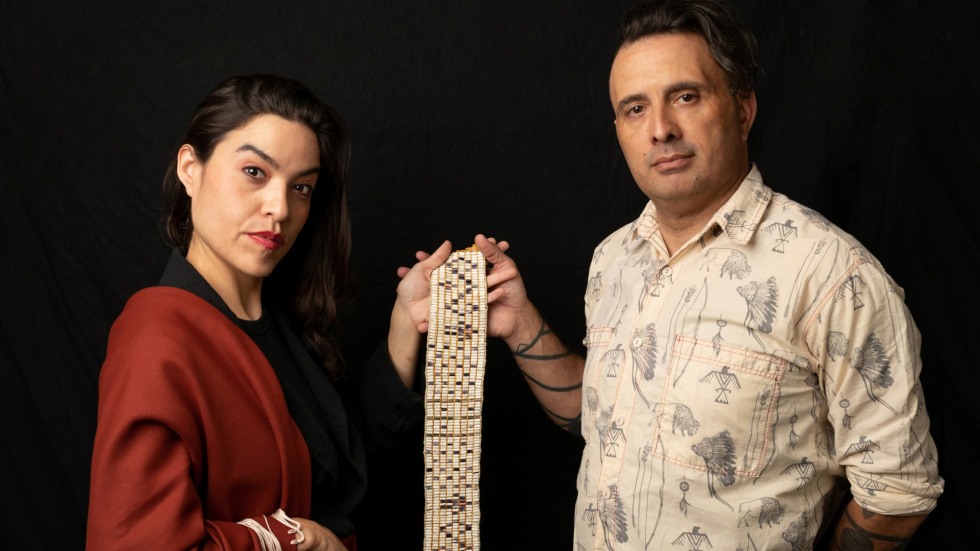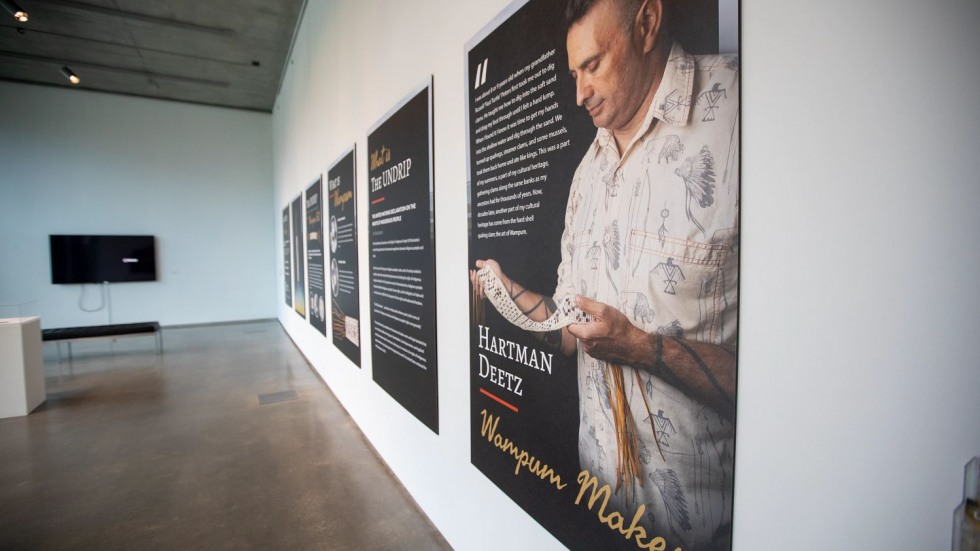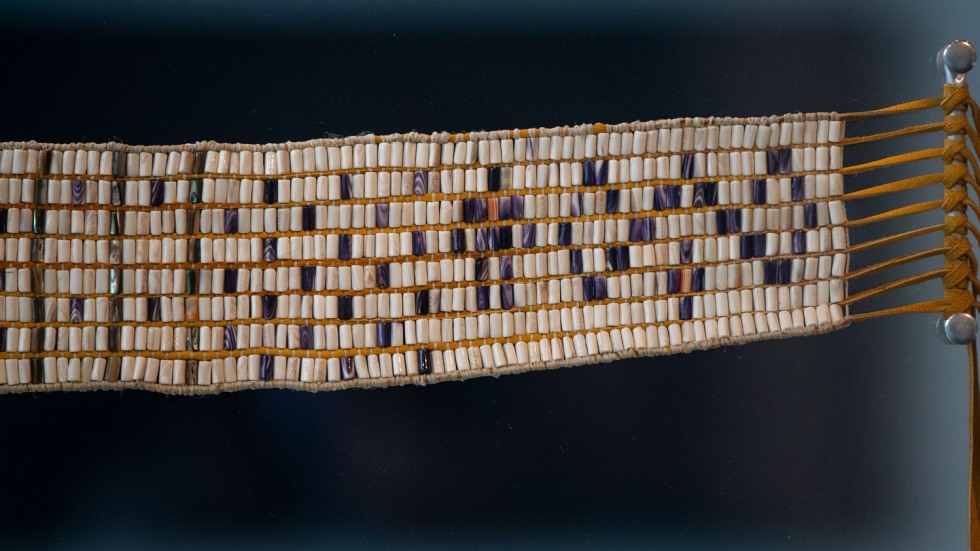PROVIDENCE, R.I. [Brown University] — An exhibition at Brown University’s Granoff Center for the Creative Arts draws compelling connections between Native artistry, Indigenous traditions and a 2007 United Nations resolution on global Indigenous peoples’ rights.
“The Beads that Bought Manhattan: The United Nations Declaration on the Rights of Indigenous Peoples,” is on view and open to the public in the Granoff Center’s Cohen Gallery through Sunday, Oct. 24. It is presented by the Brown Arts Institute in collaboration with the Native American and Indigenous Studies Initiative.
The exhibition’s focal point is a belt made of deerskin, artificial sinew and wampum — cylindrical beads made from quahog clam shells — that symbolizes and celebrates the United Nations Declaration on the Rights of Indigenous Peoples (UNDRIP), adopted in 2007.
One of the belt’s creators, Hartman Deetz, said making wampum is more than an art form. It’s also a symbol of his identity and ancestral history.
“I was about 8 or 9 years old when my grandfather first took me out to dig clams,” Deetz said. “This was a part of my summers, a part of my cultural heritage, gathering clams along the same banks as my ancestors had for thousands of years. Now, decades later, another part of my cultural heritage has come from the hard-shell quahog clam: the art of wampum.”
Deetz, a member of the Mashpee Wampanoag Tribe based in Southeastern Massachusetts, said his ancestors once used wampum as a form of currency, trading intricate shell jewelry, clothing and accessories with nearby tribes and European settlers. They would often create belts made of wampum, sinew and deerskin to symbolize inter-tribal pacts to maintain peace or share stewardship of the land.
Deetz has followed in his ancestors’ footsteps by creating a wampum belt that features 46 beads to represent UNDRIP’s 46 articles, framing the declaration as a modern-day “treaty” between nations. He created the belt alongside several Indigenous apprentices in the Northeast and Michelle Cook, an Indigenous human rights lawyer and member of the Diné tribe.


